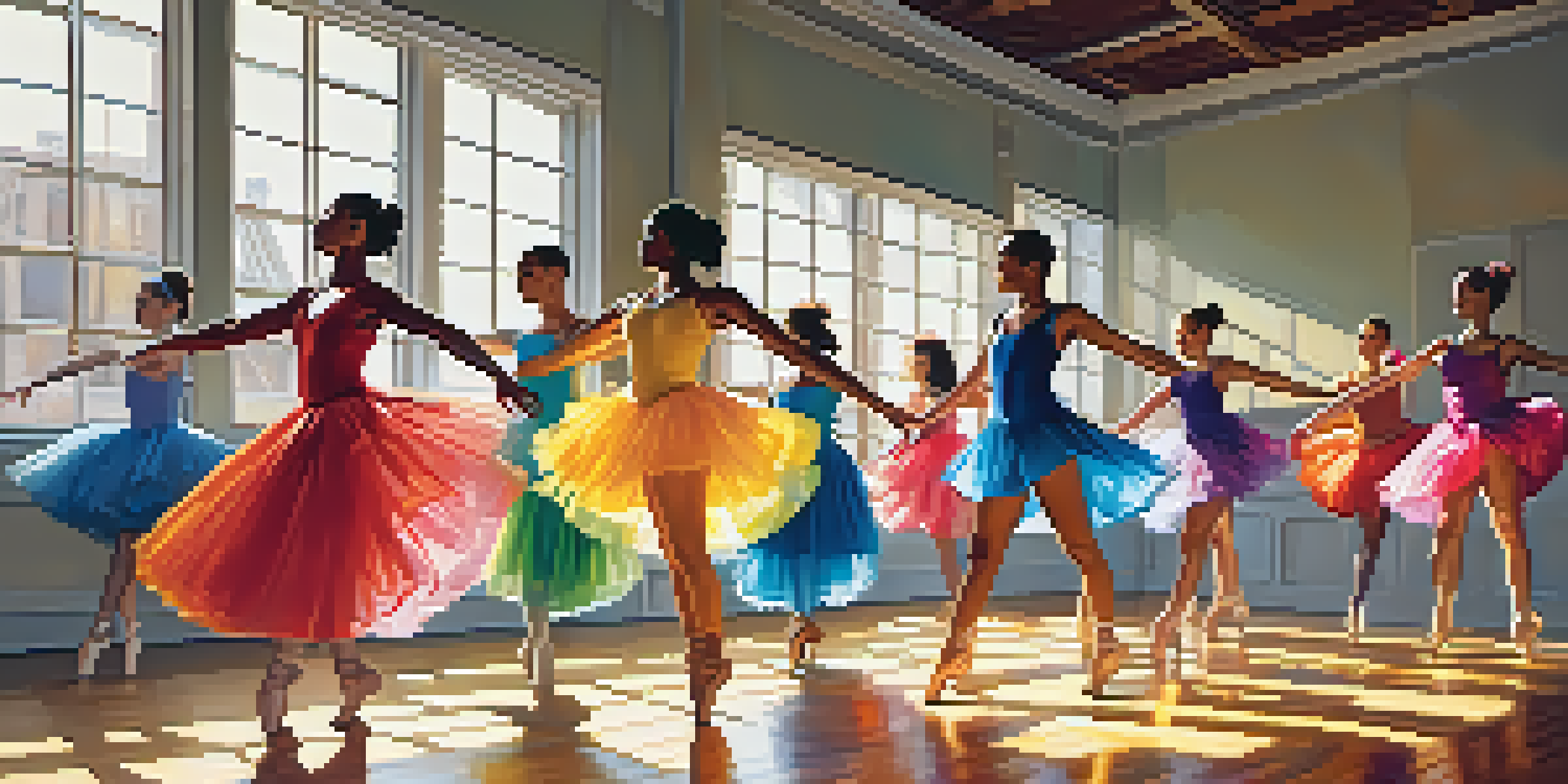The Role of Music in Dance Collaborations: A Harmonious Blend

Understanding the Connection Between Music and Dance
Music and dance have been intertwined throughout human history, creating a vibrant tapestry of artistic expression. Each art form enhances the other, allowing dancers to interpret melodies through movement and musicians to inspire emotions with rhythm. This symbiotic relationship is essential in various dance styles, from ballet to hip-hop, where the music sets the mood and tempo for the dancers. Ultimately, understanding this connection enriches both the performance and the audience's experience.
The Influence of Rhythm and Tempo on Dance Styles
Rhythm and tempo are crucial components that shape the dynamics of dance. For instance, a fast-paced song may lead to energetic movements, while a slower melody invites graceful, fluid motions. Dancers often rely on the rhythmic structure of music to synchronize their steps, enhancing the visual impact of their performance. By choosing the right tempo, choreographers can evoke specific emotions, making the dance more engaging and memorable.
Music and Dance: A Symbiotic Bond
The relationship between music and dance enhances artistic expression, allowing both forms to elevate performances and engage audiences.
Collaboration Between Choreographers and Musicians
The collaboration between choreographers and musicians is a fascinating creative process. Often, choreographers work closely with composers to develop original scores that perfectly complement their vision for a dance piece. This partnership allows for a deeper exploration of themes, creating a cohesive narrative that resonates with the audience. When both artists understand each other's craft, the result is a seamless blend of movement and sound that elevates the performance.
The Role of Cultural Influences in Music and Dance
Cultural influences play a significant role in shaping both music and dance styles. Different cultures bring unique instruments, rhythms, and movement patterns that can be blended in innovative ways. For example, traditional African drumming often serves as the foundation for contemporary dance forms, creating an exciting fusion of old and new. By embracing these cultural elements, artists can create rich, diverse performances that celebrate their heritage while captivating audiences worldwide.
Cultural Influences Shape Art Forms
Cultural elements significantly impact music and dance styles, fostering innovative fusions that celebrate diverse heritage.
Emotional Expression Through Music and Dance
Both music and dance are powerful vehicles for emotional expression. A heartfelt melody can evoke joy, sadness, or nostalgia, which dancers interpret through movement. For instance, a passionate tango can convey longing and desire, while an upbeat pop song may inspire feelings of happiness and celebration. This emotional connection is what draws audiences in, creating a shared experience that resonates long after the performance ends.
The Impact of Technology on Dance and Music Collaboration
Technology has revolutionized how music and dance collaborate, opening new avenues for creativity. From digital music production to video editing, artists can now experiment with sound and movement in ways that were previously unimaginable. For example, augmented reality can enhance performances by projecting visuals that interact with dancers, blurring the lines between reality and imagination. This technological integration not only attracts a younger audience but also pushes the boundaries of artistic expression.
Technology Transforms Creative Collaboration
Advancements in technology are revolutionizing how musicians and dancers collaborate, leading to new and exciting forms of artistic expression.
Exploring Genres: How Music Shapes Dance Forms
Different music genres inspire distinct dance styles, each with its own unique characteristics. For instance, ballet is often associated with classical music, while street dance thrives on hip-hop beats. As artists explore various genres, they can create hybrid styles that challenge traditional norms and encourage innovation. This genre-blending not only enriches the dance community but also invites wider audiences to appreciate the diversity of movement and sound.
The Future of Music and Dance Collaborations
Looking ahead, the future of music and dance collaborations is bright and full of potential. As artists continue to push creative boundaries, we can expect to see even more innovative partnerships emerging. With globalization and digital platforms, influences from around the world can effortlessly merge, leading to exciting new forms of expression. This evolution not only keeps the art forms alive but also ensures they remain relevant in an ever-changing cultural landscape.